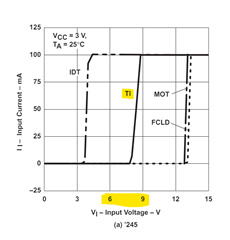Other Parts Discussed in Thread: TMAG5111, , SN74HCS541, TSD05, TXU0102
Tool/software:
Hello E2E Community,
We are using SN74LVC2G17 to buffer a sensor output from a remote Open drain TMAG5111 sensor with 0-5V range & a maximum of 5kHz signal speed with 2kHz as typical speed.
Idea is to leverage the Schmitt trigger on this buffer while also creating some level of safety for any EOS event that might occur on the sensor side.
We have incorporated a TVS diode followed by a pulse proof series resistor of 1kOhm before the buffer for safety from the field side cabling. (Any comments on using a higher value resistor here <10kOhm?)
- My question is do we need to add series current limiting resistor between the buffer output & the MCU inputs when the trace length is no more than 12mm?
- Is there any possibility that the buffer might overdrive the MCU input & cause the damage to the MCU pins?
- Can we add a MLCC of 1 to 10nF from Buffer to MCU to slow down the edges of the buffer output & eliminate potential high rise time issues?
Kindly guide.
The PCB is a 2 layer board with solid ground plane & this buffer might be the only component with the high rise time.



